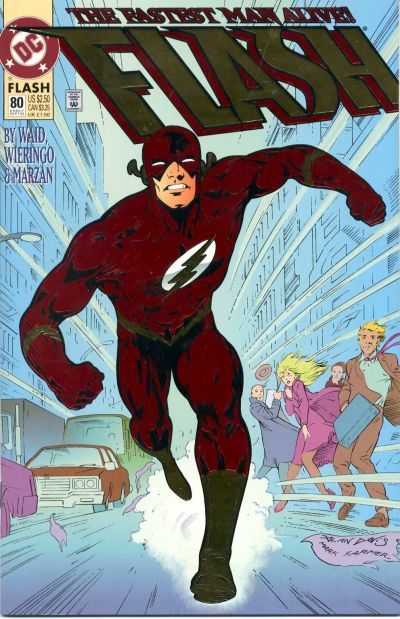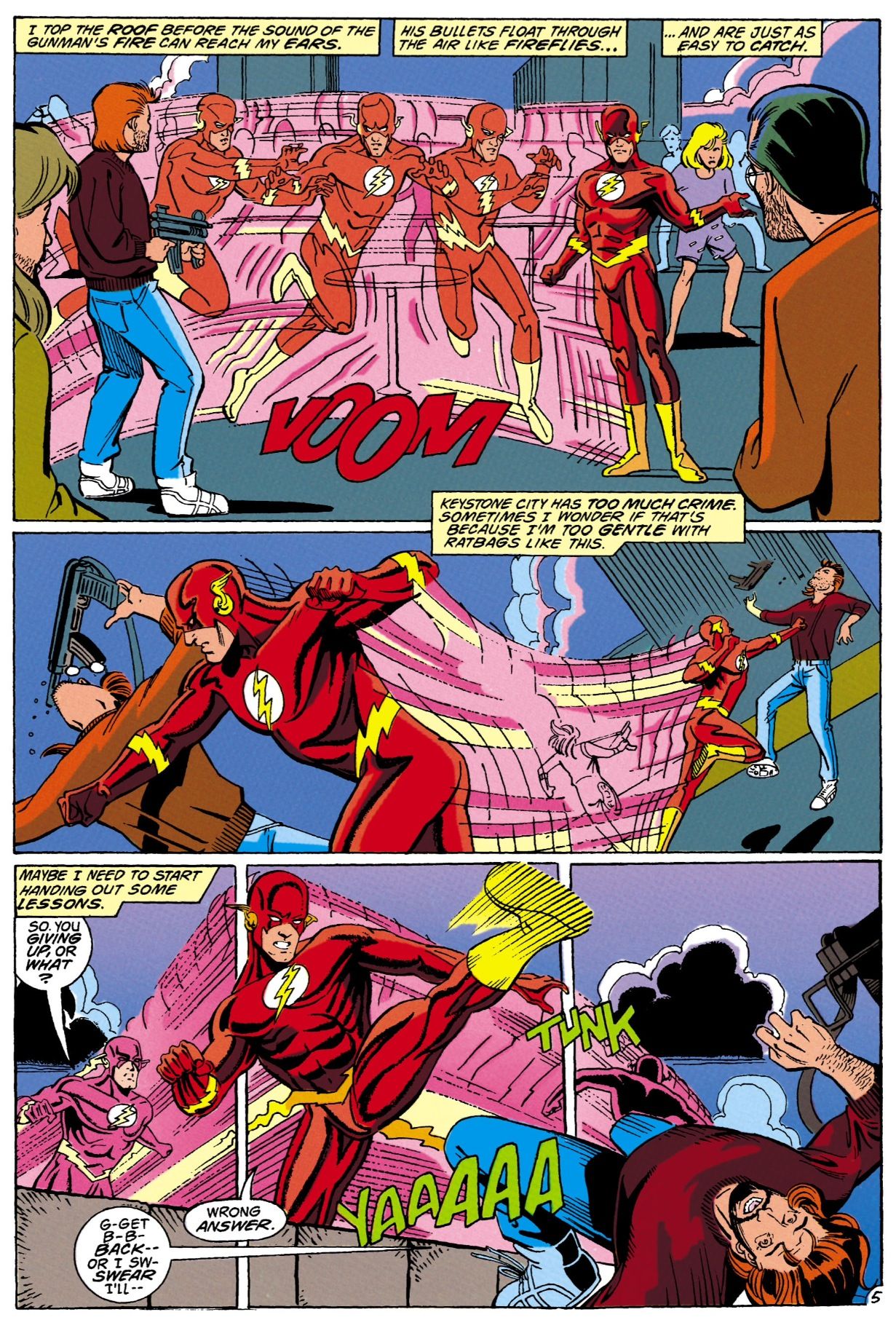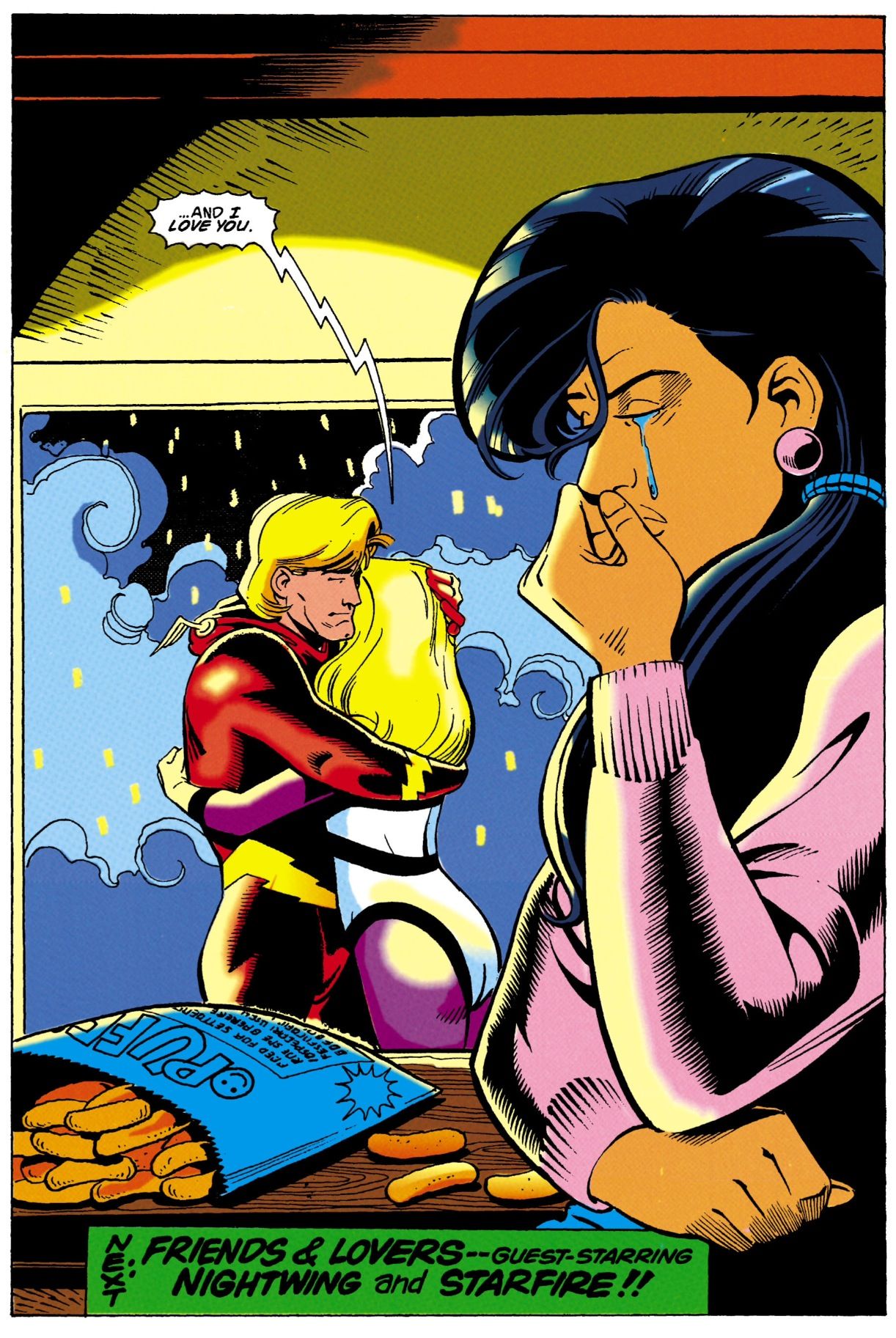In this column, Mark Ginocchio (from Chasing Amazing) takes a look at the gimmick covers from the 1990s and gives his take on whether the comic in question was just a gimmick or whether the comic within the gimmick cover was good. Hence "Gimmick or Good?" Here is an archive of all the comics featured so far. We continue with the foil cover to 1993's Flash #80.
Flash #80 (published September 1993) – script by Mark Waid, art by Mike Wieringo and Jose Marzan Jr. Cover by Alan Davis and Mark Farmer
Thanks to a brand new television series that debuted earlier this month, there’s an unquestionable revival in interest in one of the comic book industry’s most iconic heroes, Barry Allen, aka the Flash. And since Gimmick or Good is one of those features that’s always in lockstep with what’s hot and current (as current as a column about books released more than 20 years ago can be), for this latest installment I thought we would take a look back at an issue/arc from the revered Mark Waid run on the Flash. Of course, during the 90s, the red suit and yellow boots were being filled by Allen’s nephew, Wally West, but let’s not be contrarian and obsess over such technicalities.
For Flash #80, the book was randomly adorned with a special foil cover, despite the fact that it wasn’t a special anniversary issue, or didn’t feature any groundbreaking, status quo changing events.
But what about inside the comic?
If anything, one would think that DC would have popped its gimmick cover cherry on the Flash series a few issues earlier when the book was in the midst of its much-celebrated “The Return of Barry Allen” arc. That story saw Wally’s life get turned upside down when the original Flash shockingly returns from the dead and is looking to get his old job back (of course, it’s all a ruse being perpetrated by Barry’s nemesis, Professor Eobard “Zoom” Thawne). Instead, the foil-covered Flash #80 kicks off the very first issue in the arc following “Return of Barry Allen.” Regardless of the merits of DC’s gimmick deployment, Flash #80 is a very worthy successor to the “Return of Barry Allen,” and functions as a fantastic jumping on point for readers looking to find out more about Wally.
Part of what I really appreciate about this comic is how Waid’s script eases both new and old readers into Wally’s world. A lot of long-time Flash fans cite the previous arc as the moment they officially were “all in” on Wally (and he would go on to continue to star as the Flash for another decade before Barry’s actual return during Final Crisis). The opening page reads like something you would find in a rebooted series in today’s comics: a brief overview of Wally’s powers with an even quicker snapshot on his origin story, which gives the book the vibe of it being a “fresh start” for the protagonist. And considering what Wally just had to emotionally/physically endure in “The Return of Barry Allen,” it makes sense for Waid to take this approach in this issue. But all the same, the story never feels too bogged down in recapping previous events. It’s the perfect balance that ultimately services every kind of reader.
It doesn’t hurt that Waid’s rundown of Wally’s powers has a certain amount of verve and rhythm to it. He asks, “how fast is fast,” and then goes on to compare himself to a stylish muscle car and a motorcycle, before dismissing both as someone has caught lighting in his hands (a wonderful analogy for the Flash’s origins/powers – I really can’t praise the literary qualities of this intro page enough).
After the strong intro, we get a quick but effective reintroduction of Wally’s supporting cast, including his girlfriend Linda Park. We get a fun little bit where Linda wants to watch a baseball game and Wally agrees despite having no interesting in the sport, which serves as some important foreshadowing for the actual conflict/drama of the storyline. At the baseball game, a former love of Wally’s Frances Kane, is using her magnetic field-controlling powers to rip apart the stadium. In order to get her to calm down, Wally has to convince Frances that he still has feelings for her, leading to a very awkward (yet simultaneously, somewhat sincere) embrace on national television that’s witnessed by everyone – Linda too.
And while a “getting caught kissing your ex-girlfriend in front of your current girlfriend” plotline might sound a bit sitcommy on the surface, the drama is well sold in Flash #80 because Waid’s script engages the reader with the characters. Wally’s deceit of Frances is a matter of life or death and protecting the innocent, which makes Linda’s apparent heartache all the more devastating. In later issues, Linda confides to Wally that she feels inadequate because she doesn’t have super powers – an excellent twist that emotionally lands, again, because these characters are all generally likeable and relateable.
I can’t talk about Flash #80 without also mentioning the book’s penciller, the late Mike Wieringo. It’s Wieringo’s first work on a book that would eventually help him make a name for himself in the comic book industry. He would also collaborate with Waid again in the early 2000s on Fantastic Four.
While the issue does feature some small indications that this is one of Wieringo’s first times illustrating a mainstream comic book – primarily as it pertains to the consistency of his character from panel to panel – overall he produces a very dynamic-looking book. There’s also a certain level of brightness in Flash #80 that really works well with Wally’s character, and the overall feeling of optimism and starting fresh found throughout Waid’s script.
Verdict: Good





